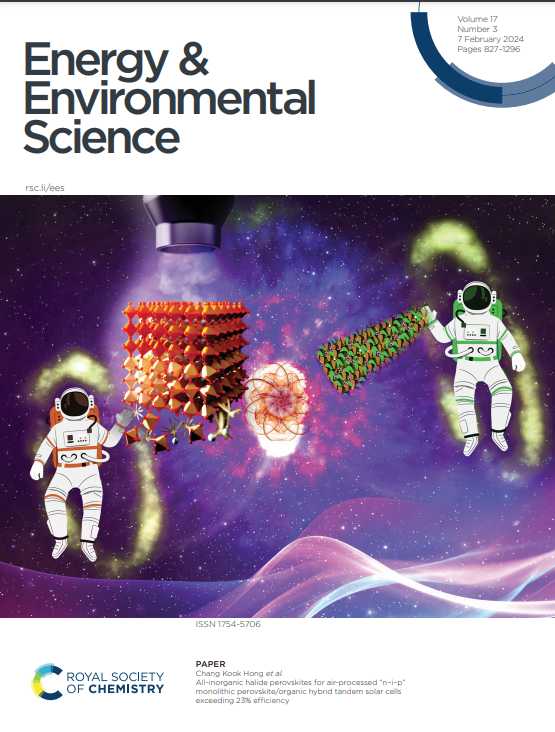Defect-rich Carbon Induced Built-in Interfacial Electric Field Accelerating Ion-conduction towards Superior-stable Solid-state Batteries
IF 32.4
1区 材料科学
Q1 CHEMISTRY, MULTIDISCIPLINARY
引用次数: 0
Abstract
The electrochemical performances of composite solid-state electrolytes (CSEs) cannot satisfy the application requirements of solid-state batteries (SSBs) due to the low concentration of movable cations with disordered and slow cation transportation. Herein, a designed CSE with a built-in interfacial electric field (D-CSE) is successfully constructed via defect engineering of electron-conducting carbon. The electrons would transfer and construct a built-in interfacial electric field (IEF) at the phase interface due to the different Fermi energy levels of the defect-rich carbon and polymer matrix. The built-in IEF would promote the dissociation of alkali-metal salts to release free cations, and provide an extra driving force to boost the transportation of cation. Additionally, the defect-rich carbon could regulate the distribution of electric field to enable rapid cation transfer. In terms of sodium, these coupling effects contribute to the high ionic conductivity (0.67 mS cm−1) and transference number (0.77) of D-CSE. Consequently, D-CSE-based solid-state sodium metal batteries exhibit remarkable cycling stability (0 °C, 80.9%, 500 cycles; 80 °C, 80.1%, 2500 cycles). This strategy of built-in IEF broadens the perspective achieving a uniform and rapid ion transportation and paves the way for achieving superior-stable SSBs.求助全文
约1分钟内获得全文
求助全文
来源期刊

Energy & Environmental Science
化学-工程:化工
CiteScore
50.50
自引率
2.20%
发文量
349
审稿时长
2.2 months
期刊介绍:
Energy & Environmental Science, a peer-reviewed scientific journal, publishes original research and review articles covering interdisciplinary topics in the (bio)chemical and (bio)physical sciences, as well as chemical engineering disciplines. Published monthly by the Royal Society of Chemistry (RSC), a not-for-profit publisher, Energy & Environmental Science is recognized as a leading journal. It boasts an impressive impact factor of 8.500 as of 2009, ranking 8th among 140 journals in the category "Chemistry, Multidisciplinary," second among 71 journals in "Energy & Fuels," second among 128 journals in "Engineering, Chemical," and first among 181 scientific journals in "Environmental Sciences."
Energy & Environmental Science publishes various types of articles, including Research Papers (original scientific work), Review Articles, Perspectives, and Minireviews (feature review-type articles of broad interest), Communications (original scientific work of an urgent nature), Opinions (personal, often speculative viewpoints or hypotheses on current topics), and Analysis Articles (in-depth examination of energy-related issues).
 求助内容:
求助内容: 应助结果提醒方式:
应助结果提醒方式:


